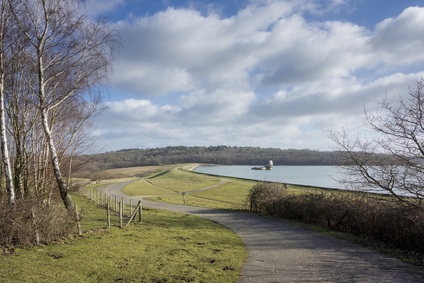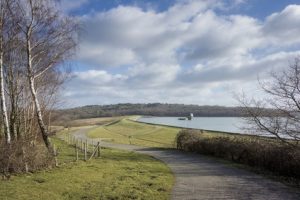One of the best things about orienteering is that it is a relatively inexpensive hobby to pursue. This makes it the perfect pastime for families to get involved in, or for people to take part in on an irregular basis. If you do decide that you would like to start orienteering in a more competitive manner, then you can always upgrade your kit to help you to improve your game.
A map and checkpoint recording device will normally be provided to you by the venue. The recording device can be as simple as a punch card, but some venues now use electronic “dibbers” which record when you get to each checkpoint.
Compass
A compass is really the only thing that you “need” to be able to take part in orienteering. A compass with a flat, rectangular base and a movable dial is the best choice for orienteering, because it can be set down properly onto your course map.
You may be able to rent or borrow a compass from some orienteering courses in the UK, but it is always best to check ahead. Although some people do take part without a compass, they are far more likely to get lost or head off in the wrong direction!
Good Outdoor Shoes
Whilst orienteering, participants can cover a lot of different types of terrain. They should wear strong, waterproof shoes that are comfortable enough to run around in. Fell running shoes or normal trainers are a good choice. Walking boots may be too heavy if you are trying to move around the course quickly, but they are OK for people who are orienteering for fun.
Some people buy special studded shoes which are designed to provide extra grip on difficult terrain.
Outdoor Clothes
You should choose suitable outdoor clothes to wear when you go orienteering. Depending on the length of the course, you could be outside for much of the day, so make sure that you are prepared for a change in the weather.
Long trousers and long sleeves are recommended even in warmer weather, because you could end up having to travel through long grass or dense vegetation.
Gaiters can also be worn to protect your ankles and lower legs from thorns.
Lightweight, breathable fabrics are best if you are planning on running or jogging the course.
Watch
Track your progress by using a watch to monitor the time that you have been out on the course. Some events do have a time limit, and a watch can help you to stay on track.
Whistle
Some orienteering events recommend that participants bring a whistle with them, so that they will be able to attract attention if they do get lost.
In proper orienteering events, participants (individuals or groups) are set off at intervals and may not see their competitors for the whole day. Participants can get lost around the course, and a whistle can be used to summon help if needed.
Refreshments
It is a good idea to take water or an energy drink with you, even if you are only going out on a short course. Make sure that you always take a drink out with you in hot weather. High energy snacks can also help to give you an energy boost if you find that you are flagging.
Torch
If you are doing night orienteering then it is vital that you have a reliable, bright torch. Many competitors prefer to use a head torch because this allows them to keep their hands free whilst they run. A head torch also gives a steadier beam when you are moving.



 Bewl Water is one of the largest stretches of open water in the country, and is surrounded by gorgeous natural parkland.
Bewl Water is one of the largest stretches of open water in the country, and is surrounded by gorgeous natural parkland.
